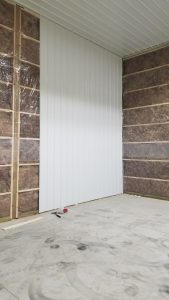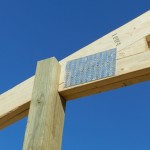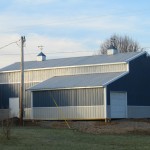Pole Barn Insulation, Oh So Confusing
How to best insulate any building can be confusing – with pole barns being right there with any other structural system. “Best” also has to include a balance between the upfront investment and the long term savings, throwing in the wild guess as to what future costs of heating and/or cooling might be. Energy costs are probably not going to get any less expensive, so using today’s costs in determination of the outcome should yield a conservative answer.
To me – a practical return is if I can have my investment returned within a seven year period or not. There are also some intangibles to be factored in, such as a well-insulated building being much quieter for the occupants.
Regular readers will recognize the volume of questions I receive from those who did not plan ahead for the eventuality of climate control and are now looking for solutions. This is an issue which can and should be economically planned for at time of construction.
Reader MATT in ROCKFORD got the ball rolling on this subject when he wrote:
“I am ready to build my dream garage but somehow I managed once again to stumble upon an area where people just can’t agree on a single solution. Insulation!!! There should be a single answer for each barn use. 1: Storage only use this… 2: Equine only use this… 3: Workshop/Garage with occasional winter heat use this… 4: Garage/Mancave/House with full time HVAC use this… Plus the difference is argued about whether to use a radiant barrier? Or vapor barrier and where to put them. Vapor barrier like Tyvek etc. outside, plastic vapor barrier inside between wall material and the studs. Up north, snow on steel. Down south sun blazing on the steel. To vent or not to vent is also important.
I would like to have a person with proper insulation experience in the north and the south who can explain why and in which order ( pic or graphics would be fantastic ) of what is correct. And give definitive answers boasting absolute confidence instead of having an answer that seems wishy-washy. Many kit distributors like to sell things easy to ship (dbl bubble radiant barrier). Many builders like speed, convenience, and mark-up (radiant barrier). Seems like spray foam has issues too.
Ultimately I live in Alabama where humidity, mold, and insects are a definite issue. I am building my final dream garage/home and I am disabled with a limited income so I can’t afford to make a mistake.
Ugh Please Help!
I also forgot to mention or ask about insulation that follows the roof line like in a clearspan structure. Or using steel trusses or scissor trusses where the insulation may be next to the roof and there is no attic. Thanks, Matt”
Matt ~
I feel your pain. Insulation and ventilation are areas where there are a nearly innumerable number of possible solutions, many of which both work and can be Code conforming. Over my nearly 40 years in the post frame building industry, my own feelings about how to properly insulate have changed – most due to the advent of new products, better research and the gaining focus on energy efficiencies.
Tune in tomorrow for the rest of the story!










Afternoon sir. My question is: I’m in the beginning stages of my barndominium (pole barn). The roof is metal as well as the exterior walls. (Live in eastern Tennessee) is a vapor barrier necessary on the exterior walls??? It is installed on the roof and I plan to blow in insulation in the roof and bat insulate the exterior walls?? Thank you in advance. Semper Fi
For walls – have a Weather Resistant Barrier (e.g. Tyvek or similar) between framing and steel siding, use unfaced batts (we recommend rock wool) and a well seaeld 6mil clear poly vapor barrier on inside of wall.